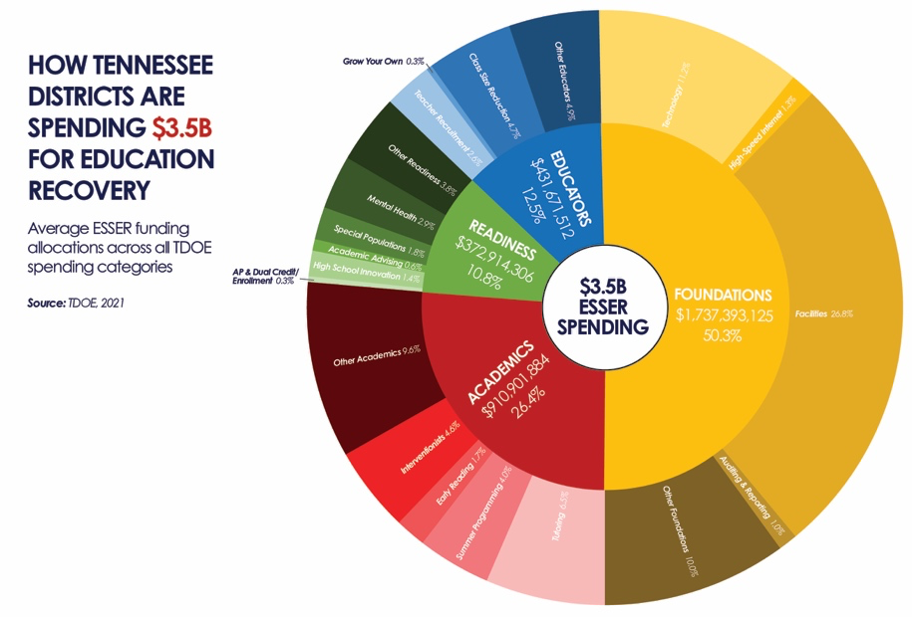
Tennessee public schools have received more than $3.5 billion in federal aid through the Elementary and Secondary School Relief (ESSER) fund, providing an opportunity to invest a historic amount of money to support students across the state. In an effort to help Tennessee leaders as they look forward and update their ESSER spending plans, SCORE has released a brief and a public district-level dashboard outlining ESSER spending across the state.
Most ESSER funds will go straight to districts through the Tennessee Department of Education (TDOE) in response to spending plans state education agencies submitted to the US Department of Education. In addition, every district in Tennessee submitted plans for how they plan to spend their ESSER funds. To understand how districts are approaching this historic funding infusion, SCORE analyzed 136 of 147 district ESSER spending plans that were approved by TDOE and made publicly available. That analysis serves as the foundation for findings in our research brief and was used to create SCORE’s public district-level dashboard looking at ESSER spending across the state.
A Dashboard For District Spending
The dashboard promotes transparency for ESSER plans, allows district stakeholders to compare their spending categories to state averages, and provides contextual district information including size, student demographics, and per-pupil expenditures. District leaders, community stakeholders, and parents all can use the SCORE ESSER plan dashboard to gain a better understanding of how federal funds will affect our schools and students.

A First Look And Time To Innovate
SCORE’s new research brief, Trends In Tennessee ESSER Plans: A Landscape Analysis, offers a preliminary look at how districts are planning to spend more than $3.5 billion over the coming years. This first look at aggregated Tennessee district plans provides a clearer picture of how state and district leaders are using funds to support students and school success. SCORE found that, on average, districts are spending the largest amounts on facilities and technology, along with promising academic and teacher supports, such as high-dosage tutoring and professional development.

In addition to highlighting bright spots in innovative practices in key spending areas, SCORE also offers recommendations for ways that districts can improve their plans to support schools, students, and teachers more strategically in education recovery. As Tennessee leaders look ahead and update their public plans (every six months per TDOE guidance), they have a chance to adapt their plans to be more reflective of research-based practices and to strategically address key issues such as student support and educator workforce sustainability.
SCORE’s analysis found that when districts submitted ESSER spending plans in August of 2021, they were primarily focused on addressing immediate pandemic-related challenges to offering continuous learning. Over the next two years, districts have the opportunity to leverage ESSER funding to not only focus on learning recovery but to implement innovative programming that allows all students to be successful.
As a state, we must continue to lead in monitoring and reporting on ESSER spending and its impact. This will ensure these funds are effective in improving teaching and learning outcomes across Tennessee. The findings in our brief and the data in the dashboard are useful tools to help with reviewing and updating spending plans as we move forward.
Alexis Parker is the senior data and research analyst at SCORE. Sam Correa recently completed a graduate fellowship at SCORE.
Read More:
